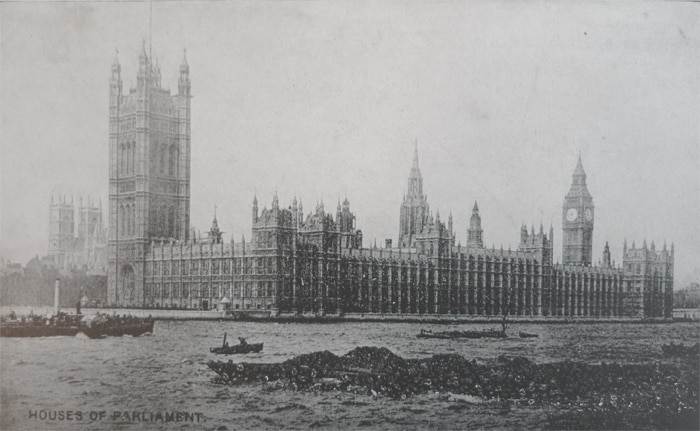The Heatwave of 1858: The Great Stink.

[Excerpted from The Ghost Map. The Story of London’s Most Terrifying Epidemic – and How It Changed Science, Cities, and the Modern World, by Steven Johnson (Author) ©2007, p. 205-6 ] In June 1858, a relentless early-summer heat wave produced a stench of epic proportions along the banks of the polluted Thames. The press quickly dubbed it the “Great Stink”: “Whoso once inhales the stink can never forget it,” the City Press observed, “and can count himself lucky if he live to remember it.” Its overwhelming odors shut down Parliament. As the Times reported on June 18:
What a pity … that the thermometer fell ten degrees yesterday. Parliament was all but compelled to legislate upon the great London nuisance by the force of sheer stench. The intense heat had driven our legislators from those portions of their buildings which overlook the river. A few members, bent upon investigating the matter to its very depth, ventured into the library, but they were instantaneously driven to retreat, each man with a handkerchief to his nose.
AFTER YEARS OF BUREAUCRATIC WAFFLING, THE GREAT STINK finally motivated the authorities to deal with the crucial issue that John Snow had identified a decade before: the contamination of the Thames water from sewer lines emptying directly into the river.
The plans had been in the works for years, but the public outcry over the Great Stink had tipped the balance. With the help of the visionary engineer Joseph Bazalgette, the city embarked on one of the most ambitious engineering projects of the nineteenth century: a system of sewer lines that would carry both waste and surface water to the east, away from Central London. The construction of the new sewers was every bit as epic and enduring as the building of the Brooklyn Bridge or the Eiffel Tower. Its grandeur lies below ground, out of sight, and so it is not invoked as regularly as other, more iconic, achievements of the age. But Bazalgette’s sewers were a turning point nonetheless: they demonstrated that a city could respond to a profound citywide environmental and health crisis with a massive
Read more
The Ghost Map. The Story of London’s Most Terrifying Epidemic – and How It Changed Science, Cities, and the Modern World, by Steven Johnson (Author) ©2007, p. 205-6
One Hot Summer Dickens, Darwin, Disraeli, and the Great Stink of 1858 by Rosemary Ashton ©2018
18 Facts About the 1858 Great Stink of London D.G. Hewitt – June 3, 2019, The History Collection.





